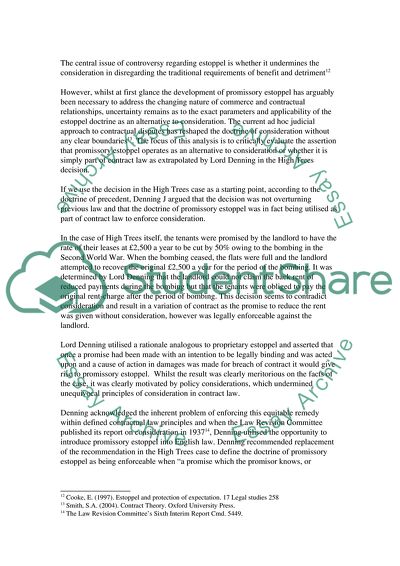Cite this document
(The Doctrine of Promissory Estoppel in Contract Law Case Study, n.d.)
The Doctrine of Promissory Estoppel in Contract Law Case Study. Retrieved from https://studentshare.org/law/1719561-the-doctrine-of-promissory-estoppel-has-developed-to-such-an-extent-that-it-is-now-a-realistic-alternative-to-consideration-for-the-enforceability-of-alteration-promises-with-reference-to-decided-cases-and-academic-commentary-critically-discuss
The Doctrine of Promissory Estoppel in Contract Law Case Study. Retrieved from https://studentshare.org/law/1719561-the-doctrine-of-promissory-estoppel-has-developed-to-such-an-extent-that-it-is-now-a-realistic-alternative-to-consideration-for-the-enforceability-of-alteration-promises-with-reference-to-decided-cases-and-academic-commentary-critically-discuss
(The Doctrine of Promissory Estoppel in Contract Law Case Study)
The Doctrine of Promissory Estoppel in Contract Law Case Study. https://studentshare.org/law/1719561-the-doctrine-of-promissory-estoppel-has-developed-to-such-an-extent-that-it-is-now-a-realistic-alternative-to-consideration-for-the-enforceability-of-alteration-promises-with-reference-to-decided-cases-and-academic-commentary-critically-discuss.
The Doctrine of Promissory Estoppel in Contract Law Case Study. https://studentshare.org/law/1719561-the-doctrine-of-promissory-estoppel-has-developed-to-such-an-extent-that-it-is-now-a-realistic-alternative-to-consideration-for-the-enforceability-of-alteration-promises-with-reference-to-decided-cases-and-academic-commentary-critically-discuss.
“The Doctrine of Promissory Estoppel in Contract Law Case Study”. https://studentshare.org/law/1719561-the-doctrine-of-promissory-estoppel-has-developed-to-such-an-extent-that-it-is-now-a-realistic-alternative-to-consideration-for-the-enforceability-of-alteration-promises-with-reference-to-decided-cases-and-academic-commentary-critically-discuss.


